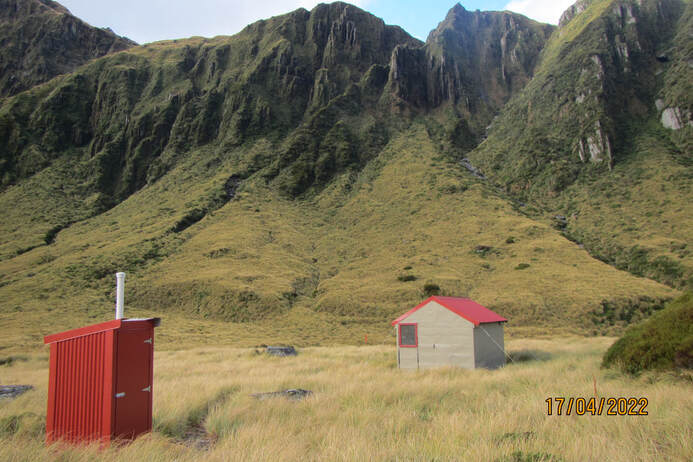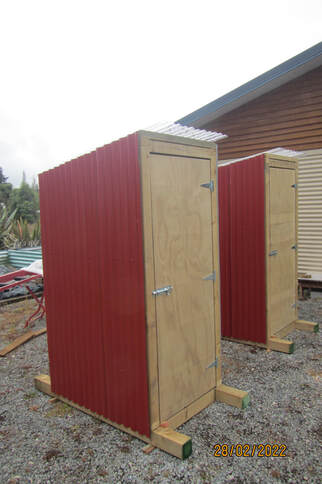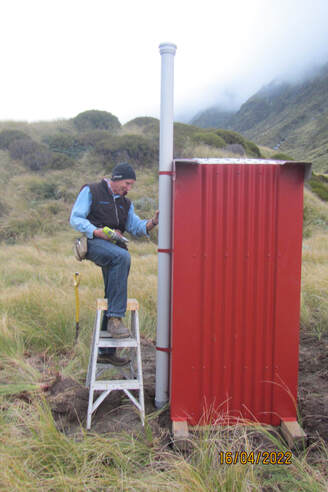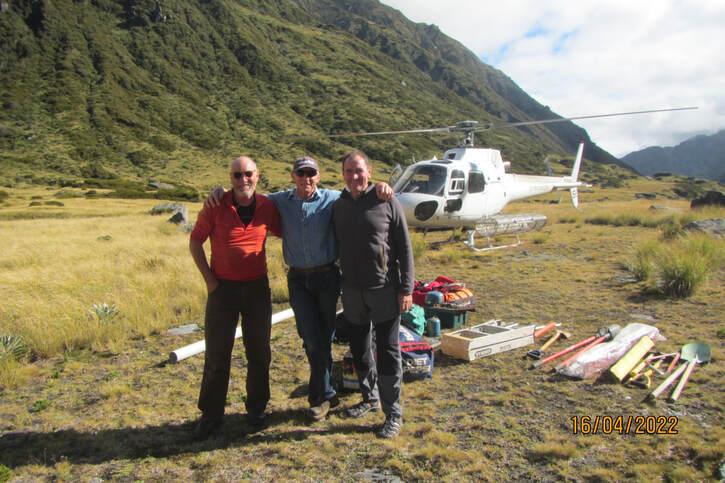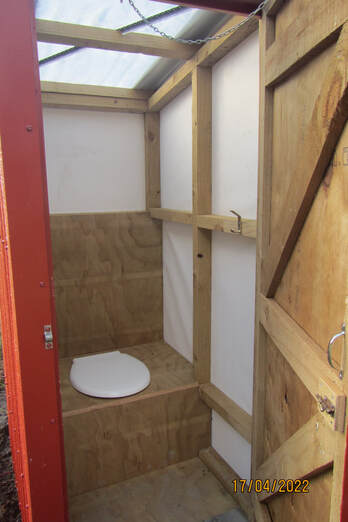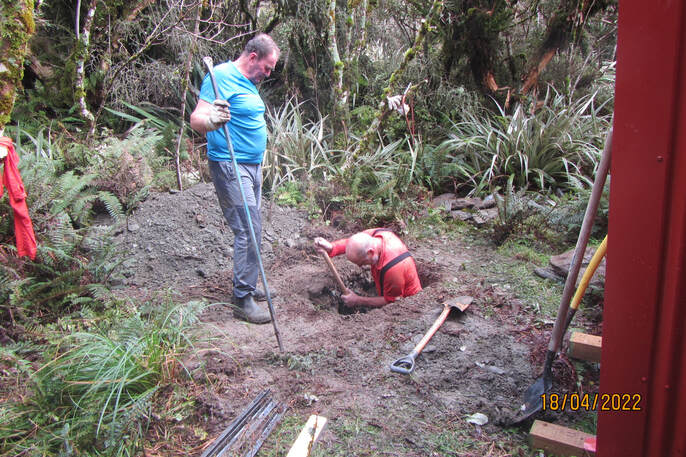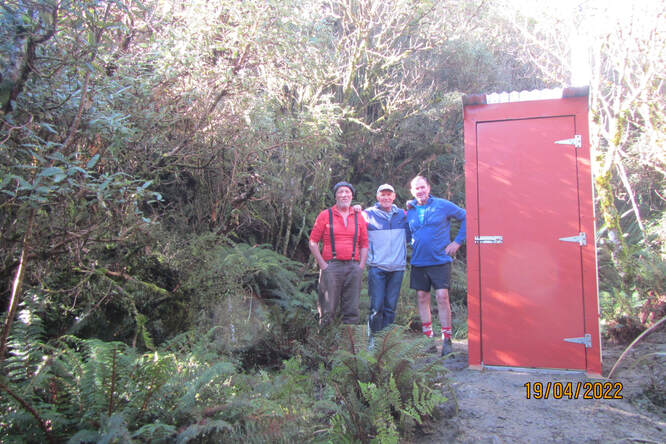|
West Coast – 15-18 April 2022 Recent work at Top Waitaha and Mullins Huts by Backcountry Trust volunteers has breathed new life into these backcountry locations. However, both huts needed toilet facilities. After Jane Morris secured funding, it was decided to co-ordinate the two projects. Colin Morris constructed the toilets, using a simplified design adapted from plans provided by DOC’s Tony Thrupp. In April, a BCT team of three flew in to install them. Personnel were: Colin Morris (qualified carpenter), Roger Woods (former project manager for Fletcher) and Col Pearson (professional painter), all from Canterbury. Colin reported these details: The toilets weigh 140kg each and measure 900mm wide, 1200mm long and 2100mm high. They’re constructed using a timber frame, ply floor and door, Colorsteel cladding, and a clear Laserlite to let in light through the roof. Roger Woods organised flights with Matt at Precision Helicopters (PHL). On 15 April, Matt flew the crew from Hokitika Gorge to Top Waitaha first, positioned the toilet there at a likely looking location behind the hut, then moved on to Mullins Hut the same afternoon. At Top Waitaha, the crew wasted little time, and soon had a hole dug ‘with surprisingly easy digging’. ‘The toilet unit was shuffled into position, adjusted for level and plumb, then anchored down. A small hole was excavated under one of the side bearers to accommodate the vent pipe elbow. We positioned it so that the door was lee to the prevailing wind. All done and dusted before dark.’ The following day proved rainy, allowing the crew only to cut a track through the tussock to the toilet, and to place large rocks as a door step. Happily good weather on the following day saw the helicopter arrive for a transfer to Mullins Hut in the Toaroha Valley, some distance away to the northeast. ‘A suitable clearing in the bush behind the hut didn’t take too much to enlarge and Matt dropped the toilet right where we wanted it. The digging was a bit more difficult here, with quite a few large rocks. However it was nothing we couldn’t handle and we had the toilet installed by early afternoon, pretty much a carbon copy of the first unit.'
On 18 April, the team flew out, both jobs done. Colin concludes, ‘Although these huts are remote, they do receive a significant number of visitors. Hence, this was a worthwhile and necessary project to keep these areas clean. In retrospect, building these toilets involved more than I expected. By contrast, the installation was smoother and easier than anticipated.' Overall, the project took 186 hours to complete, including liaising with various parties, planning, ordering and collecting materials, travel, construction and installation. Comments are closed.
|
Projects
June 2023
|

